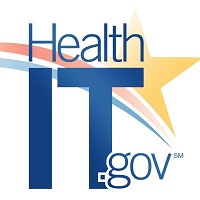 By Stephanie Garcia, MPH, Kevin Chaney, MGS, Tracy Okubo, PMP,
By Stephanie Garcia, MPH, Kevin Chaney, MGS, Tracy Okubo, PMP,
Robert Freimuth & Teresa Zayas Caban, ONC
Twitter: @ONC_HealthIT
Genomic data—information about the complete set of genes that make up each individual—have the potential to revolutionize healthcare and usher in a new era of precision medicine and scientific discovery. However, there is currently no standard way of presenting genomic data, and the standards for integrating those data with electronic health record (EHR) and other health information technology (IT) systems remain under development.
Sync for Genes and the Precision Medicine Initiative
The Sync for Genes project is designed to pilot-test and demonstrate how genomic data can be used at the point of care and for research. Sync for Genes launched in 2017 as a partnership between the Office of the National Coordinator for Health Information Technology (ONC) and the National Institutes of Health’s All of Us Research Program, which aims to collect de-identified health data, including genomic data, from one million or more people across the United States.
Sync for Genes is a companion to Sync for Science, a project to develop a simple way for people to share their health data with researchers. Making clinical genomic data available within EHRs can pave the way for patients to share genomic information with researchers using the technology developed through Sync for Science. Both projects use the Health Level Seven International® (HL7®) Fast Healthcare Interoperability Resources® (FHIR®) specification as the foundation for data exchange. Sync for Genes Phase 1 established a prototype project approach and lead to new demonstrations of genomic data sharing in Phase 2, the results of which were recently released by ONC.
Sync for Genes Phase 2 Results
In Phase 2, four organizations showed how genomic data can be exchanged for newborn screening, cancer treatment, pharmacogenomics, and bone marrow matching. The four organizations explored practical data transfer between genomic laboratories, healthcare providers, researchers, and patients:
- Lehigh Valley Health Network tested the use of genomics for targeted cancer treatment, including alerts for possible complications with particular drugs.
- National Marrow Donor Program tested a way to take genotyping information related to donor-recipient matching and convert it to FHIR®-based resources.
- Utah Department of Health used the FHIR® Clinical Genomics specification to test sending results of newborn screening tests to institutions and providers.
- Weill Cornell Medicine made progress toward the use of FHIR®-enabled genomic results in a variety of clinical decision support scenarios related to advanced cancers.
The Phase 2 organizations also engaged with the standards development community, providing feedback to HL7®’s Clinical Genomics Work Group. The group will use this information to improve the FHIR® Clinical Genomics specification and FHIR® standard. Further, as a result of Phase 2 findings, ONC supported a small project to reinitiate development of a conceptual information model that can promote consistency among the standards used by the HL7 Clinical Genomics Work Group.
Sync for Genes Phase 3: Engaging Laboratories
Looking ahead, Phase 3 of Sync for Genes will focus on standardizing the genomic data generated by laboratories. The project will continue to expand adoption of the FHIR® Clinical Genomics specification, and it presents a valuable opportunity for testing the specification in genomic laboratory settings. Phase 3 will aim to identify gaps in the FHIR® Clinical Genomics specification as it is applied within laboratory settings and generate insights that HL7® can use to continue to refine the FHIR® standard.
This work lays the foundation to advance connectivity between laboratories and other data exchange partners, such as EHRs and healthcare provider organizations. As genomic laboratories and their health IT system developers adopt the FHIR® standard, it could become easier for the All of Us Research Program and others to access standardized genomic data to improve care and research. ONC encourages stakeholders from the genomic community to get involved with HL7® and ensure that the standards being developed meet everyone’s needs.
At ONC, we are excited about the progress that has already been made by Sync for Genes and look forward to realizing the vision of genomic data that flows seamlessly, bringing life-changing information to the patients, providers, researchers, and other professionals who need it.
This article was originally published on Health IT Buzz and is syndicated here with permission.
